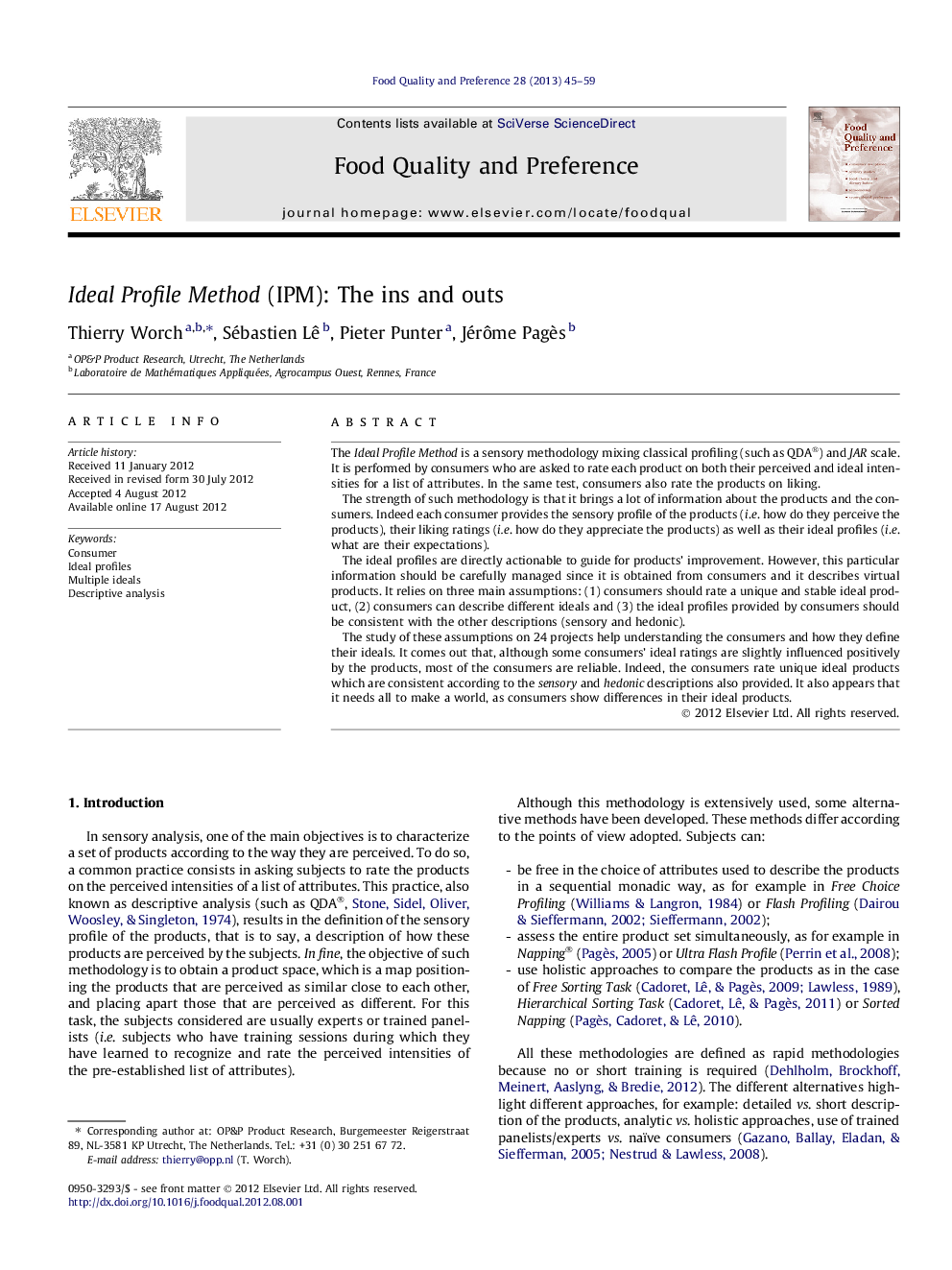| کد مقاله | کد نشریه | سال انتشار | مقاله انگلیسی | نسخه تمام متن |
|---|---|---|---|---|
| 4317353 | 1290591 | 2013 | 15 صفحه PDF | دانلود رایگان |

The Ideal Profile Method is a sensory methodology mixing classical profiling (such as QDA®) and JAR scale. It is performed by consumers who are asked to rate each product on both their perceived and ideal intensities for a list of attributes. In the same test, consumers also rate the products on liking.The strength of such methodology is that it brings a lot of information about the products and the consumers. Indeed each consumer provides the sensory profile of the products (i.e. how do they perceive the products), their liking ratings (i.e. how do they appreciate the products) as well as their ideal profiles (i.e. what are their expectations).The ideal profiles are directly actionable to guide for products’ improvement. However, this particular information should be carefully managed since it is obtained from consumers and it describes virtual products. It relies on three main assumptions: (1) consumers should rate a unique and stable ideal product, (2) consumers can describe different ideals and (3) the ideal profiles provided by consumers should be consistent with the other descriptions (sensory and hedonic).The study of these assumptions on 24 projects help understanding the consumers and how they define their ideals. It comes out that, although some consumers’ ideal ratings are slightly influenced positively by the products, most of the consumers are reliable. Indeed, the consumers rate unique ideal products which are consistent according to the sensory and hedonic descriptions also provided. It also appears that it needs all to make a world, as consumers show differences in their ideal products.
► The methodology of the Ideal Profile Method is presented here.
► During this task, the consumers describe one unique ideal.
► The ideal ratings they provide might be slightly influenced by the products.
► Consumers do not share the same ideal.
► The ideal descriptions are consistent according to the other non-ideal related descriptions.
Journal: Food Quality and Preference - Volume 28, Issue 1, April 2013, Pages 45–59